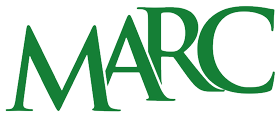
Did you know that up to 95% of new products fail, often due to inadequate market research? According to a report by Nielsen, many of these failures could be prevented if the business owner got a better understanding of market needs and consumer behavior.
In new product development, market research is more than just a first step, it’s an integral part. With a high failure rate for new products, effective market research for new product helps businesses understand customer needs, market trends, and competition. This knowledge allows companies to create products that meet market demands and stand out.
By reading this entire blog, you’ll quickly discover how market research for new products can save your launch from failure and turn it into a success stor

1. Establishing Research Objectives:
Setting clear and specific objectives for product research is an important step for businesses to achieve meaningful results. By defining what you want to learn—whether it’s identifying target markets, understanding consumer needs, or determining market trends, you create a focused approach that guides your research efforts in the right direction.
But how can you ensure your market research truly drives business growth?
Align your research goals with your business objectives to drive growth. For instance, if you are expanding into a new market, focus on understanding its preferences and challenges.
This strategic alignment turns your research into a powerful tool that directly fuels your business strategy, helping you make smarter decisions with a clearer understanding of the market.
2. Identifying Your Target Market:
For new businesses, understanding the target market is more important than ever. If you don’t create detailed customer personas to identify your target market effectively, you will find yourself being stuck in the process of conducting market research for your new product.
- Gather Data: Start by collecting information through surveys, interviews, and initial market research. Focus on key details like demographics (age, gender, income), psychographics (interests, values, lifestyle), and behavioral traits (buying habits, brand preferences).
- Build Personas: Use this data to create personas that capture the needs, preferences, and challenges of your potential buyers. Each profile should reflect a different type of customer, such as a tech-savvy young professional or a budget-conscious small business owner. These profiles help you understand what each group needs, prefers, and struggles with.
- Tailor Your Strategy: After having made these personas, new businesses can better tailor their marketing efforts, product features, and messaging to resonate with different customer groups. This approach makes sure you focus your efforts on the customers who are most likely to buy from you.
3. Selecting Appropriate Research Techniques:
To get a more filtered and clearer data, consider conducting market research by using the appropriate techniques.
- Primary Research Approaches: Use surveys, interviews, and focus groups to gather direct insights about your new product. These methods provide valuable feedback directly from potential customers and help you understand their needs and preferences.
- Leveraging Secondary Research: Utilize existing data sources such as industry reports and competitive analysis to inform your strategy. These resources provide extra information that can enhance your primary research.
- Qualitative Research: Use detailed interview methods and focus groups to understand what people think and feel about your product. It helps you grasp the reasons behind their choices and opinions.
- Quantitative Research: Use surveys and data analysis to gather numerical data. This method helps you see patterns and trends, like how many people want your product and their demographic details.
- Competitor Insights: Employ analytical tools like SWOT analysis to assess competitors’ strengths, weaknesses, opportunities, and threats. This helps you evaluate the extent of competition and identify gaps in the market that your product can fill.
4. Designing and Executing Research:
To successfully launch your new product, focus on gathering high-quality data using simple and effective tools:
- Choose the Right Tools: Use user-friendly platforms like Google Forms for creating surveys that can quickly gather customer opinions about your new product. For deeper insights, consider using Zoom or Microsoft Teams for conducting interviews or focus groups.
- Define Your Questions Clearly: Craft survey or interview questions that are straightforward and directly related to your product goals.
- Use Social Media: Run polls on platforms like facebook and instagram or ask direct questions to users to spark interest in your product and understand customer expectations.
- Track and Analyze Results: Utilize tools like Excel or Google Sheets to organize your data, look for patterns, and pinpoint trends that can shape your product development and marketing strategies.
5. Analyzing Market Research Findings:
Now that you’ve collected your data, it’s time to turn that data into meaningful insights that can help shape your business strategy:
- Segment Your Audience: Divide your customers into different groups based on factors like age, buying habits, or interests. This helps you customize your product and marketing to suit each group’s needs.
- Improve Your Brand: Use the research to understand how people see your brand. Find out what they like or dislike and adjust your messaging to match their expectations better.
- Focus on Product Development: Use the insights to improve or create products that truly solve customer problems and stand out from competitors.
- Refine Your Sales Strategy: Identify who makes the buying decisions and what influences them. This can help you simplify your sales approach and address any concerns.
- Track Your Performance: Regularly review key metrics like customer satisfaction and sales to see if your strategies are working and make adjustments as and when required.
You might also be interested in reading this blog: The Role of Feasibility Study Consulting in India
6. Transforming Insights into a Launch Strategy:
After turning the findings of the market research of your new product into meaningful insights, you are now going to turn those insights into a robust launch strategy. Here’s how:
- Align with Market Needs: Turn your insights into impactful features and benefits. Ensure your product meets real needs or desires and addresses what the market is truly seeking.
- Emphasize Unique Value: Highlight what sets your product apart. Use your research to showcase its unique value propositions and why it’s the standout choice compared to existing options.
- Target the Right Audience: Utilize your demographic and psychographic data to pinpoint your ideal customers. Change your marketing messages and channels accordingly, to effectively reach these specific segments.
- Set Clear, Realistic Goals: Use your research to set practical launch targets. Whether you’re focusing on sales, market reach, or gaining customers, make sure your goals are achievable and based on your findings.
- Monitor and Adjust: Stay adaptable. Use real-time feedback and ongoing insights to tweak your strategy as needed, optimizing your approach for the best results.
7. Testing and Validation:
Finally, to ensure your efforts pay off, end with thorough testing and validation through these key steps:
- Prototyping: Create a basic version of your product to test its core features and functionality. This helps identify any flaws or areas for improvement early on.
- Pilot Testing: Launch a small-scale version of your product to a limited audience. Gather feedback on the product’s performance, usability, and overall appeal.
- Continuous Feedback Loop: Use feedback from prototyping and pilot testing to make necessary adjustments. Continuously enhance and adjust the product using feedback from actual users.
- Iterate Before Full Launch: Repeat this cycle of testing and feedback until the product meets market needs and expectations. This helps reduce major risks before the full-scale launch.
Pro advice from team MARC: Patience is key. Although testing and refining your product may seem tedious, taking the time to thoroughly evaluate and improve it will pay off. The effort you invest now will be later seen in a successful launch and a product that genuinely meets customer needs.
Mark the Victory of Your New Product Launch with MARC:

Yes, conducting market research for a new product can be overwhelming with all the complex steps involved in the process, but at MARC, we make it a breeze while delivering excellent results.
We specialize in creating research solutions for a wide range of industries such as, e-commerce, manufacturing, F&B, and healthcare—turning unique challenges into actionable insights. From identifying market demands to refining your product strategy, our expert insights guide you every step of the way.
Want to make your new product a standout success?Join MARC today!
Reach out at +91 93596 28675 or [email protected].
Frequently Asked Questions (FAQs):
Start by segmenting the market based on demographics, psychographics, and behavioral traits as mentioned in the second point of this blog. Use surveys, interviews, and existing market data to learn about potential customers and understand their needs and preferences.
Common methods include surveys, focus groups, interviews, and competitive analysis are great ways to conduct market research. Online tools like Google Forms, SurveyMonkey, and social media platforms can also be effective for gathering insights.
Avoid pitfalls such as depending on biased data, not defining clear research objectives, and neglecting to analyze competitors. Make sure your data collection methods are reliable and that you interpret results accurately.
Competitive analysis helps you understand your competitors’ strengths and weaknesses, identify market gaps, and develop strategies to differentiate your product and gain a competitive edge.
Analyze feedback from prototypes and pilot tests to identify and address any issues. Adjust features, design, and pricing based on consumer input to better meet market demands and expectations.

